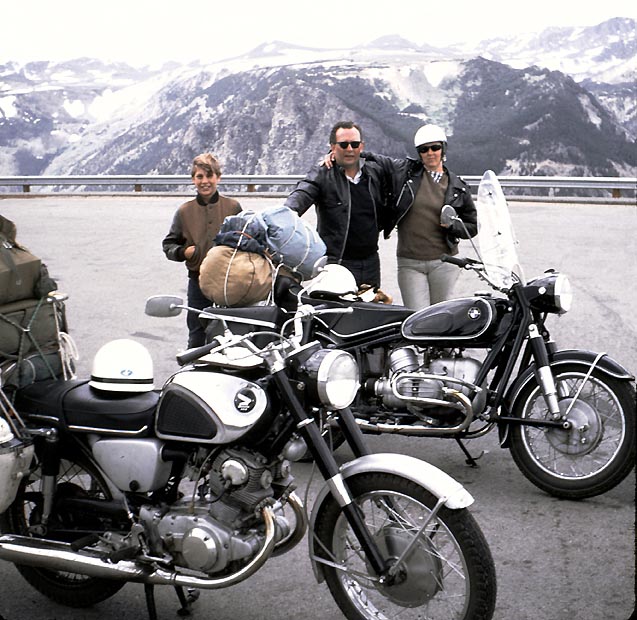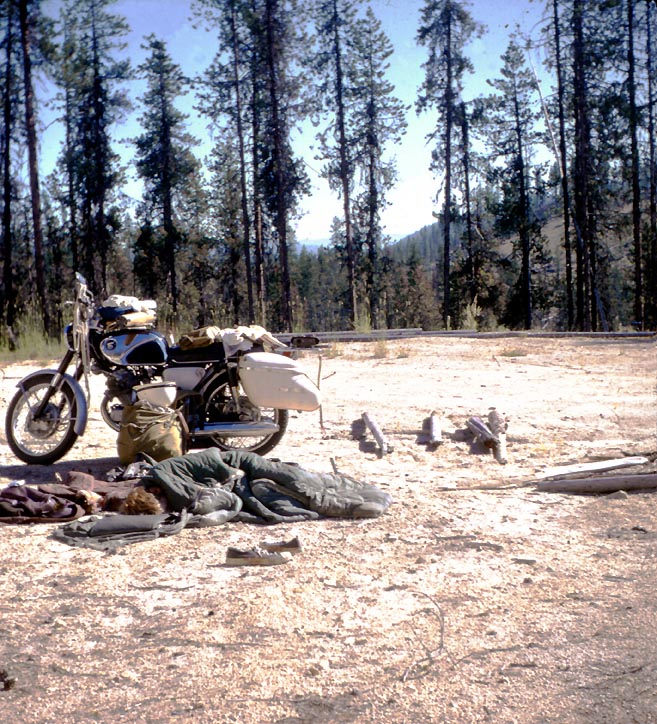"More and more females are jumping on two-wheels, and why the hell not?! We talk to female motorcycle group VC London to see what they love about the UK motorbike scene. Danni Bagnall: So, just what is VC London all "

Zen and the Art of Motorcyle Maintenance
Robert Pirsig's classic book is now more relevant than ever. Just don't mention 'Zen'.
In 1974, Robert Pirsig finally published Zen and the Art of Motorcycle Maintenance. It had been rejected 121 times.
It’s a classic of hip literature, though at the surface it seems pretty square. The book was not really about Zen Buddhism, which at the end of the sixties was a totem of all that was cool and hip. The book wasn’t really about motorcycles or fixing them, either. During that period the Biker was the ultimate counter-cultural hero – with Dennis Hopper’s Easy Rider defining the aesthetic of the road. But that didn’t matter to Pirsig and played no part in the story. The book was really about living in the here and the now.
Through the simplest of stories Pirsig invoked motorcycles and their simple mechanicity as an immaculate metaphor for a way of living with integrity.

The story goes something like this: a father and a son take off on a little Honda Twin from their home in Minnesota to the Dakotas, with another couple on a BMW boxer. They learn about the roads, themselves and their motorcycle. It’s in that essential simplicity where the resonant beauty of the book lies. And in a time where even our beloved machines are taking on the bland aspects of the appliance – the book’s lessons are more important than ever before.
“The book is a dissertation on the relationship between technical values and human values”, Pirsig told an interviewer on America’s National Public Radio a little after the book was published. “It was bringing up some information that I had picked up in my work as a technical writer, and some feelings I had about riding and motorcycles in general. But more importantly,” he went on, “it’s about expressing the fact that you should pay attention to where you are right here and right now, rather than where you are going to be in the future or where you were in the past.” The metaphor for motorcycles and motorcycling is obvious. At the wheel of a car you can drift off. Just cruise. Daydream. Try to do that on a bike and you’ll soon wake up rudely. “The past and the future are just an abstract idea”, Pirsig said, “the only reality being the present moment.” Follow the argument through and the meaning of the book becomes clear. Riding motorcycles can awaken you to reality.
Pirsig was always a brainy child, focussed on science and explanations and the seemingly unlimited possibilities of both. For him science a way of being rather than a route to other things. And the motorcycle, a crystallisation of a century of scientific enquiry at the time therefore become a metaphor for life itself, and one’s attitude to it being the way of maintenance or otherwise of the machine that is life. But more than that, the motorcycle in Pirsig’s hands become a literal vehicle of intent – a construction through which one interacts with the world and engages with each present moment – a way of experiencing what Thoreau called the bloom of the present moment.

“I decided to talk about riding motorcycles and motorcycle maintenance as an activity that can teach you things and awaken you to the world in the same way that sitting in meditation can,” he said. “People get the idea that Zen is apart from the everyday world, but it’s not. It’s not an exotic activity. And conversely, people think that riding motorcycles and motorcycle maintenance is simply getting your hands greasy, which is not worthy of some sort of philosophical enquiry. The book isn’t about Zen Buddhism, but by concentrating on everyday aspects of life you can gain understanding about the world as well as through other more ‘exotic activities.’” One of the most resonant things about fixing motorbikes and learning about the realities of the real world is Pirsig’s views on ‘Stuckness’. If you’ve ever tried to fix your bike, you’ll know what stuckness really is.
“When you get stuck fixing motorcycles, it’s not a bad moment,” he says. “Instead of getting mad, I go off and get a cup of coffee. You come back and try again and you’re not stuck any more. “Life doesn’t stop, even when you’re stuck. Stuckness is non-doing. And that can be illuminative.”
And therein lies the beauty of the Pirsig way of being, which speaks of the beauty, in turn, of simple mechanicity. You’re struggling to fix something elusive – the settings on a carburettor, the fitment of the crank case – the mechanical coupling of the throttle cable. You stop. Down tools. Walk away. Grab a coffee. Come back a little later. You’re not stuck any more.
The problem is that these days, you don’t get stuck. You don’t get stuck at all because you’re handed over the workings of your car or bike to an engineer who is also not stuck. He’s also going to hand over the diagnostic and the fixing of the problem to a computerised engine management system.
When the mechanics don’t even get stuck, you’ve got really serious problem.
all pictures; Pirsig
CLICK TO ENLARGE














